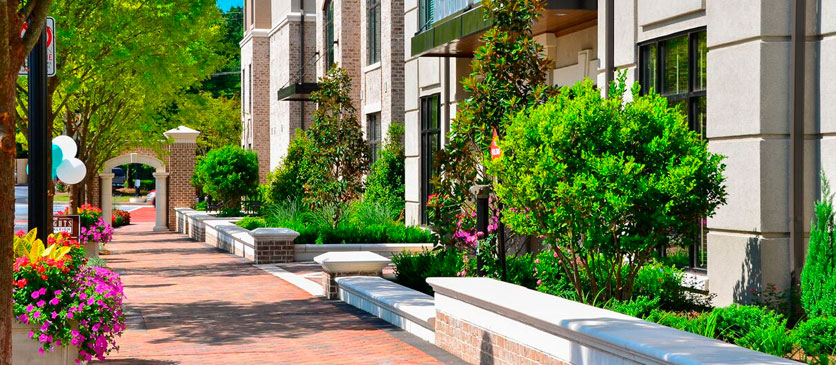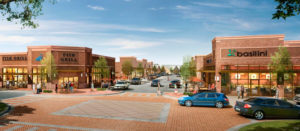The decade of the 1890s was an exciting period of development for Americans. Towns were becoming cities; cities were expanding. This was especially true in Texas, where speculators were drawn from other states. The Houston area attracted thousands of these adventurers, and it was in this climate that Houston Heights began.
As early as 1886, Oscar Martin Carter, a self-made millionaire who had business interests in Nebraska and Colorado, brought to Houston a utopian vision for the approaching twentieth type of town, a planned community where successful entrepreneurs and working people alike could live and work, in health and safety, as neighbors. Compared to Houston, a city plagued by yellow fever and devastating annual floods, Carter chose the ideal spot for his new community. Houston Heights, with an elevation 23 feet higher than downtown Houston, a natural sandy soil, rich vegetation, mature trees and artesian water sources, promised a sanctuary of health and well being.
The land O.M. Carter and his Omaha and South Texas Land Company developed had long been an important area to the city of Houston. This section of Southeastern Texas was first inhabited by Indians of the Coastal Plains. Although a Spaniard had visited the area in the early 16th century, it was not until 1745 that the French from New Orleans and the Spanish began to vie for control of the region. At that time, the area that included much of Houston Heights was controlled by Chief Canos of the Orcoquisacs. Chief Canos successfully played the two European powers against one another for many years.
O.M. Carter had convinced his eastern investors that Houston was destined for growth and the ideal place to invest heavily. Not only did Carter realize that Houston would attract major industries and thus experience. Population growth due to the jobs created by those industries, but he planned for many of the industries to locate in his planned development. He also knew that there would be a great need for housing and he wanted his development to provide the opportunity for home ownership.
Carter’s vision included a transportation system that would bring passengers four miles from Houston to his planned community, a considerable distance in those days. However, in 1890, when most cities the size of Houston already had electric streetcar lines, Houston only had two mule-drawn systems. He arranged for the purchase and electrification of both systems, thus guaranteeing electric streetcars to Houston Heights. His investment gave potential investors the confidence to believe in his dream and invest in his totally planned community. It was also a very profitable venture, since the city was destined for tremendous growth as well.
By 1891, Carter attracted a corps of investors who set up the Omaha and South Texas Land Company. He even convinced some of them to give not just their money, but to live their lives in his utopian city. Carter recognized the desire of the growing middle class to move away from the noise and dirt of the crowded city. The company purchased 1,756 acres of land, and made over $500,000 worth of improvements, including utilities, streets and alleys, as well as parks and schools. The blocks were carefully arranged, some principal streets were covered with shell, and a waterworks system was established. Scattered open spaces supplemented the 60 foot-wide esplanade on Heights
Boulevard. The trees and other natural features that now line the streets were planted during that early period of development. Carter also built a commercial strip at 19th and Ashland Streets and arranged for stores to open there to serve new residents. As was common in most promotional towns, he built a grand hotel (destroyed by fire, 1915) where prospective buyers could stay when they inspected the area.
The founding fathers also built a series of grand Victorian homes along Heights Boulevard, a broad, tree-lined central thoroughfare patterned after Commonwealth Avenue in Boston. Major industrial and commercial concerns were also attracted to Houston Heights by Carter and his associates before the turn of the century, thus completing his plan to develop a totally planned community in which to live and work.
From the outset, Carter planned Houston Heights as a modest community. There were a few land dealers, such as William A. Wilson, who acted as investors and developers in the area. But, in general, Carter sought to prevent speculation. His advertisements and his methods of promotion do not appear to have been aimed at the very wealthy, but at the growing class of white-collar workers, young professionals, and the skilled craftsmen of the working class.
For the full story, read our online story. This story is reprinted with permission from the Houston Heights Association. Visit their website at www.houstonheights.org.



